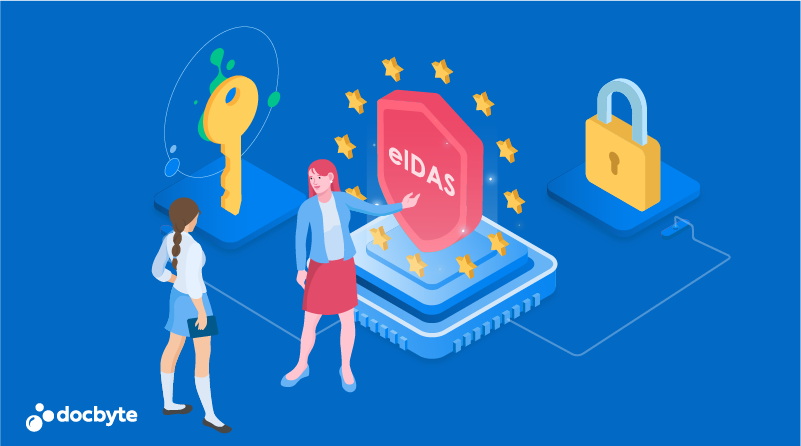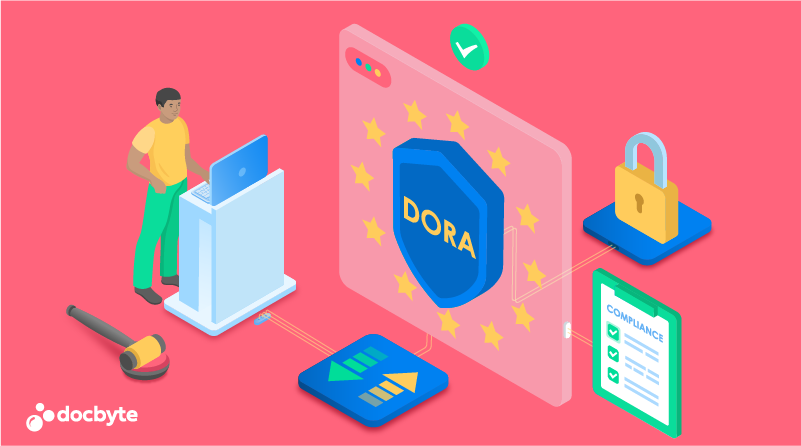Considering all the business happening within and throughout Europe, secure electronic transactions across borders are essential. EIDAS (Electronic Identification, Authentication, and Trust Services) comes in here.
The eIDAS Regulation was adopted by the European Union (EU) to promote interoperability among the 27 member states. Its main aim is to ensure cross-border recognition of electronic identification schemes while providing high trust and security in electronic transactions. We’ll discuss why eIDAS was created and how it benefits businesses and consumers.
Why was eIDAS Created?
eIDAS results from a growing demand for secure, cross-border electronic transactions. The initiative was created to ensure that all other member states recognise the electronic identification schemes of EU member states.
This means that a business in one EU country can now authenticate its customers using its national electronic identification system, and other EU countries will recognise this authentication. As a result, eIDAS has increased trust, security, and interoperability between countries, making it easier and more efficient for businesses to carry out transactions in other member states.
Implementing eIDAS Standards
Implementing eIDAS standards can be a complex and time-consuming task. Suppose your organization has yet to gain experience with electronic identification. In that case, you must learn about the regulation’s requirements, the different types of electronic identification available, and the technological infrastructure needed to support them.
However, third-party providers have already undergone the certification process and have the necessary infrastructure and expertise to start working immediately. This means that by using a third-party provider, your company can save time and resources and focus on your core business.
Lower Costs
Implementing eIDAS standards requires a significant investment in technological infrastructure, including the hardware and software necessary to support electronic identification and trust services.
The certification process can also be costly, requiring external auditors to evaluate your organization’s compliance with the regulation’s requirements. However, third-party providers have already invested, and you can take advantage of their existing infrastructure without bearing the costs of implementing everything in-house.
Lower Risk
Implementing eIDAS standards can be risky, particularly if you need more expertise to comply fully with the regulation’s requirements. Failing to comply with eIDAS standards can expose your organization to data breaches, legal liability, and reputational damage.
However, using a third-party provider with experience and certification in electronic identification and trust services can lower this risk. These providers are subject to regular audits, ensuring they are always up to date with the latest requirements and adhere to the best security and data protection practices.
More Options
Many types of electronic identification are available, from simple username and password combinations to biometric authentication such as fingerprint or face recognition. However, implementing eIDAS standards in-house may limit your options regarding the types of electronic identification you can use.
Third-party providers, on the other hand, have a broader range of electronic identification and trust services available. This means you can choose the options that best suit your organization’s needs without investing in them upfront.
eIDAS certification – Advanced and Qualified
To implement the eIDAS standards within your organization, you must ask for or work with a third-party provider who has received the advanced or qualified certification. Trusted Lists hold details about providers of certificates for electronic signatures, requiring providers of qualified certificates to be compulsory entries.
Each Member State oversees and releases these lists, and users can explore them through the Trusted List Browser. We’ll break down the differences between advanced and qualified so you can compare.
1. Advanced Electronic Signature
- The certificate for an advanced electronic signature may or may not be qualified.
- The private key related to the certificate is not mandatory to be stored on a qualified electronic signature creation device (QSCD).
- Advanced electronic signatures can be created using Trust Service Providers (TSP) certificates.
2. Qualified Electronic Signature
- A qualified electronic signature requires a qualified certificate.
- The private key related to the qualified certificate must be stored on a ‘qualified electronic signature creation device’ (QSCD).
- According to eIDAS Regulation, a qualified electronic signature explicitly holds the equivalent legal effect of a handwritten signature.
- Providers of qualified certificates for electronic signatures are mandatorily listed in the corresponding national Trusted List, as per eIDAS legal obligations.
eIDAS in Europe
The implementation of eIDAS has brought many benefits to businesses, such as reduced administrative burden and more efficient business processes. For instance, a business can now electronically sign contracts with other businesses, consumers or public administration without physical documents. This has led to a significant reduction in costs, increased profits, and safer electronic transactions, which have led to greater consumer trust and potential consumer base.
Another benefit of eIDAS is the availability of trusted services validated and approved by a member state supervisor. These services include electronic signatures, seals, time-stamping, and website authentication. eIDAS ensures that these trusted services comply with the regulations’ requirements, providing high security and reliability to businesses and consumers all over Europe.
Service providers who comply with the eIDAS regulation can offer their trust services cross-border, eliminating businesses needing to sign multiple contracts to operate in different countries.
eIDAS also protects the privacy of EU citizens who participate in cross-border transactions. The regulation sets strict rules on how personal data is handled and processed, ensuring citizens’ rights are respected and protected across the EU.
The regulation provides transparency and control over the use of personal data, giving citizens confidence in the security and safety of their information.
Rules of E-Signature in Business Deals Outside Europe
The e-sign act applies to all business dealings outside of Europe and requires that the consumer provides their consent before any electronic communication or transaction. The consent must be in writing and meet specific requirements, such as the consumer being informed of any right or option to have the record provided or made available on paper or in a non-electronic form.
The right to withdraw consent, including any conditions, consequences, and fees in the event of such withdrawal, must also be outlined.
In addition, the consent should specify whether it applies only to the particular transaction that triggered the disclosure or to identified categories of records that may be provided during the parties’ relationship.
Furthermore, the consent must describe the procedures the consumer must use to withdraw consent and to update information needed to contact the consumer electronically. It should also inform the consumer how they can request a paper copy of a record and whether any fee will be charged for that copy.
Moreover, businesses should ensure that they authenticate their consumers’ e-signatures. Authentication should be done by verifying the identity of the party signing the document before and during the electronic transaction. This could be through a password, a biometric identifier, or other appropriate means.
When using e-signatures for business deals outside Europe, it’s important to keep records of all electronic transactions. The records should include all information related to the transaction, such as the parties involved, the date and time of the transaction, and any documents exchanged. Retaining such records will help in case of any disputes or legal action.
Conclusion
In conclusion, eIDAS has promoted interoperability and security across the EU, making cross-border electronic transactions easier, safer, and more efficient for businesses and consumers. Businesses can now authenticate their customers electronically, making transactions more secure and efficient and reducing the administrative burden.
eIDAS has reduced costs and increased business profits while improving consumer trust and expanding the potential consumer base. With eIDAS, trusted services can now be provided cross-border while also protecting the privacy of EU citizens. eIDAS is essential in our digital age and critical to the EU’s digital single market strategy.







